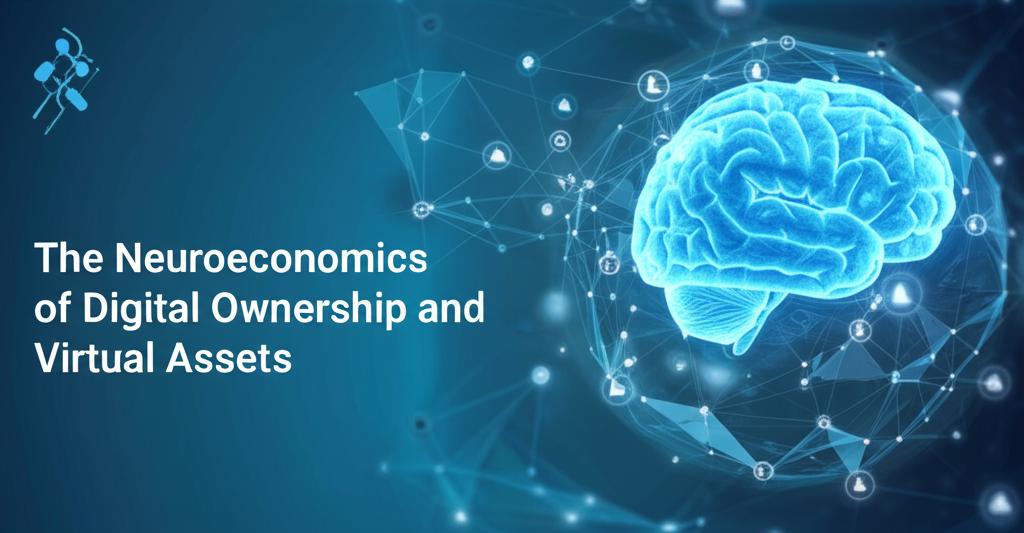The way we perceive and value digital items is undergoing a significant transformation. This shift is not just about new technologies like NFTs (Non-Fungible Tokens) and virtual assets; it's deeply rooted in our brains and how they adapt to an increasingly digital world. Neuroeconomics, a field that combines neuroscience, psychology, and economics, offers valuable insights into this evolving landscape of digital ownership.
The Shifting Concept of PossessionTraditionally, ownership has been tied to physical possession. However, for "digital natives" – those who have grown up with virtual goods and online accounts – the lines between physical and digital ownership are blurring. Research indicates that for many, especially younger generations, digital ownership can feel just as real and significant as owning a tangible object. This psychological shift means that the physical nature of an asset, once a primary strength, can now be viewed as a limitation. Security concerns are also evolving, moving from worries about physical theft to anxieties about hacking and data breaches. Convenience, accessibility, and even environmental impact are becoming increasingly important factors in how assets are valued and chosen.
The Brain's Response to Digital Interaction and OwnershipOur brains are remarkably adaptable. Studies using neuroimaging techniques have shown that frequent use of digital devices, like smartphones, can lead to measurable changes in cortical activity and even brain structure. For instance, the repetitive touching of screens can enlarge the brain's sensory and motor cortex areas associated with fingertips.
When it comes to digital ownership, several psychological factors come into play:
- The Endowment Effect in the Digital Realm: We tend to value things we own more highly than identical items we don't. This cognitive bias, known as the endowment effect, appears to extend to digital assets. The effort invested in acquiring or creating a digital item, even if minimal, can enhance this feeling of ownership and value.
- Agency and Control: Interacting with digital platforms and customizing virtual items or avatars can create a strong sense of agency and control. This feeling that the digital asset is an extension of one's creative will or identity strengthens the perception of ownership.
- Social Signaling and Scarcity: Virtual assets, much like physical collectibles, can serve as status symbols within online communities. The rarity or exclusivity of a digital item, often enforced by technologies like NFTs, can significantly increase its perceived value. This taps into our innate desire to collect and to signal our identity and achievements to others.
- Emotional Attachment: We can develop genuine emotional attachments to digital items, especially those linked to significant experiences, social connections, or self-expression within virtual environments. This emotional connection fuels the sense of psychological ownership.
Consumer neuroscience employs tools like EEG (electroencephalogram), skin conductance (SC), and blood volume pulse (BVP) to understand consumers' emotional and cognitive responses to digital experiences, including shopping in the metaverse. Research comparing metaverse shopping to traditional e-commerce suggests that while virtual environments can elicit greater cognitive engagement, they may also be more mentally demanding and might not always generate strong positive emotional responses initially. However, higher levels of arousal and positive emotions are linked to a greater willingness to explore and interact within virtual worlds, potentially boosting purchase intentions.
The brain processes visual information much faster than text, and emotional responses to elements like color and shape are hardwired. User experience (UX) design increasingly leverages these neurological insights to create digital interfaces that are not just functional but also emotionally engaging and memorable.
The Rise of NFTs and the Creator EconomyNFTs have significantly impacted the concept of digital ownership by providing a way to verify and transfer ownership of unique digital assets on a blockchain. While the initial hype around NFTs was largely speculative, the market is maturing towards more practical applications. Key growth areas include gaming (where NFTs enhance the experience of digital ownership of in-game items), fashion (using NFTs as digital certificates of authenticity), virtual real estate, and the creator economy (allowing artists and creators to monetize their digital work directly). The market for NFTs is projected to see substantial growth in the coming years, driven by these utility-focused applications and integration with AI and metaverse technologies.
Challenges and the FutureDespite the increasing acceptance and psychological normalization of digital ownership, challenges remain. Market volatility, regulatory uncertainty, and technical limitations are hurdles that need to be addressed. Furthermore, understanding and navigating the potential negative consequences of intensive digital media use, such as its effects on attention, memory, and social cognition, is crucial.
The continued evolution of digital technologies, coupled with a deeper understanding of the neuroeconomic factors driving our perception of value and ownership, will shape the future of virtual assets. As our lives become increasingly intertwined with digital spaces, the psychological and neurological underpinnings of how we own, trade, and value virtual items will become even more significant. The focus is shifting from mere speculation to creating genuine utility, fostering meaningful engagement, and recognizing the profound ways in which the digital is reshaping our understanding of what it means to possess something.

